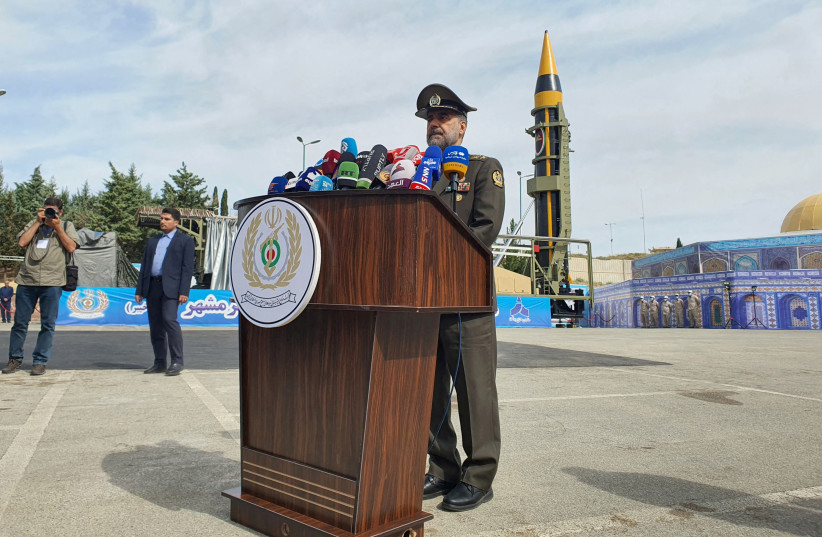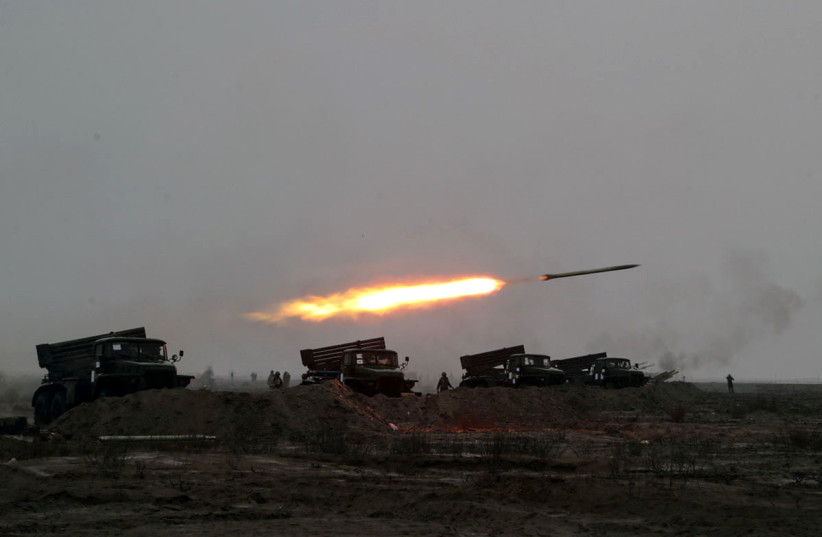Understanding Iran’s claims about testing a new ballistic missile – analysis
Iran’s decision to test-fire a new long-range missile has raised eyebrows around the Middle East and in the West.
One of the reasons Iran’s missiles are now more in the spotlight is because of the country’s threats to Europe and the longer ranges of these missiles. Iran has supplied Russia with armed drones and its missile program is increasingly recognized as a growing threat outside the Middle East.
The missile used by Iran in their latest test is a 4th generation Khorramshahr-class missile called Kheibar.
The Khorramshahr class of missiles has been tested since 2017, and France and the US have both spoken out about the test firing. The US has called the development of these kinds of missiles a serious threat and says it opposes further developments involving this type of missile.
Iran is supposed to be curtailed in carrying out these actions by UN Resolution 2231 but nevertheless continues to conduct these tests and seek the technology to increase its missiles and their ranges.
 Iran’s Defense Minister Brigadier General Mohammad-Reza Ashtiani speaks in a press conference during the unveiling of a new surface-to-surface 4th generation Khorramshahr ballistic missile called Khaibar in Tehran, Iran, May 25, 2023. (credit: WANA (WEST ASIA NEWS AGENCY) VIA REUTERS)
Iran’s Defense Minister Brigadier General Mohammad-Reza Ashtiani speaks in a press conference during the unveiling of a new surface-to-surface 4th generation Khorramshahr ballistic missile called Khaibar in Tehran, Iran, May 25, 2023. (credit: WANA (WEST ASIA NEWS AGENCY) VIA REUTERS)Iran announced the introduction of this missile during state ceremonies marking the anniversary of a 1982 battle at Khorramshahr, which occurred as part of their brutal war with Iraq.
Iran’s Minister of Defense was present at the ceremony, and the head of the IRGC, Ismail Qaani, also spoke at an event at Dezful, north of Khorramshahr, to commemorate the war with Iraq. Iranian media and officials have discussed the history of the IRGC during the war with Iraq, indicating how the missile test is wrapped up with Iran’s regime and the concept of its own history.
Iran believes it needs more missiles like this, built locally, to project its power around the region and not be forced to fight on its own territory as was the case in the 1980s.
Backlash from the West as missile development continues
“Iran’s development, and proliferation of, ballistic missiles poses a serious threat to regional and international security and remains a significant non-proliferation challenge,” US State Department spokesman Matthew Miller told reporters.
The spokesman for Iran’s foreign minister rejected criticism from the West about the missile. He also drew parallels with the 1980s and argued the West had backed the Saddam regime against Iran.
Iran’s Defense Ministry has said this is the most advanced version of a class of Iranian missiles, pointing to its use of an advanced engine system and navigation aid system with a large warhead.
“This missile also uses active phase guidance and control, middle phase guidance and control,” Iran’s Fars News reported. Iranian state media said the 4th generation missile is “precision-guided” with a 2,000km range and 1,500kg warhead.
The reports in Iranian state media also characterized this as a “stealth” missile that could evade radar and said that it is liquid-fueled and can be prepared for launch quickly.
According to the reports, it exits the earth’s atmosphere and travels up to Mach 16, re-entering the atmosphere at Mach 8 and boasts a unique guidance and control system that can adjust its trajectory as it travels to outer space and re-enters the earth’s atmosphere.
Iran boasted it was “invisible” to radar, although it was unclear if any of Iran’s claims can be independently verified.
Russian media heralded the success of this missile test, as the two countries work closely together. For Moscow, it is likely that any Iranian success with missiles and drones will help Russia distract the West from its own war in Ukraine.
Iran’s advancements in missile technology
The new missile test joins a long list of Iran’s claims about achievements in missile technology. Iran isn’t developing these missiles in secret, it likes to show them off. In February, Iran said it had developed a cruise missile with a range of 1,650 km. In November, they finished the development of a hypersonic ballistic missile, Revolutionary Guards’ aerospace commander Amir Ali Hajizadeh said.
Iran has continued to develop missiles rapidly in the wake of the Iran Deal in 2015, likely redirecting some resources from the nuclear program to the missile program in the years after 2015, before continuing to rapidly enrich uranium in the last several years as well.
 A missile is launched during an annual drill in the coastal area of the Gulf of Oman and near the Strait of Hormuz, Iran, in this picture obtained on December 31, 2022. (credit: IRANIAN ARMY/WANA (WEST ASIA NEWS AGENCY) VIA REUTERS)
A missile is launched during an annual drill in the coastal area of the Gulf of Oman and near the Strait of Hormuz, Iran, in this picture obtained on December 31, 2022. (credit: IRANIAN ARMY/WANA (WEST ASIA NEWS AGENCY) VIA REUTERS)In February 2019, Iran said it had built a new Hoveizeh cruise missile with a 1,200km range as part of celebrations for the 40th anniversary of the Iranian Revolution. At the time, it also displayed what it claimed was a Khorramshahr 2 medium-range ballistic missile with a range of 2,000km. It also unveiled the Dezful medium-range missile, with a range of 1,000km, an upgrade of a Zolfagher missile. These were solid-fueled missiles.
The country has continued apace with this development; working on a new space launch vehicle, and a new Shahab-3 missile, which in November 2019 it claimed it had equipped with a maneuverable re-entry vehicle. Later these variants were called Emad and Ghadr.
In drills in December 2021, Iran also tested the Sejjil missile. In March 2022 Iran also tested the Zuljanah space launch vehicle, and in September 2022, Iran also showed off the Rezvan liquid-fueled missile which it said had a range of 1,400 kilometers.
Therefore Iran’s new test of a missile joins a long background of its testing and claims about new missiles. It frequently gives these missiles new names, even if they are very similar to previously known missiles, with some updates. Iran claims new abilities for these missiles, such as “pinpoint accuracy” and the ability to defeat air defenses.
Overall then, the new test of a missile should be seen in the context of Iran often claiming to test missiles with new capabilities during historic anniversaries and continuing to boast about them.
Considering the fact Iran has exported missile technology to the Houthis in Yemen and Hezbollah; as well as sending actual missiles to Syria, Lebanon and Iraq; the threats of the missiles must be taken seriously. The overall threat to countries like Israel is that these missiles have large warheads and may be part of the larger Iranian drive for weaponizing its nuclear program.
In addition, Iran’s recent claims about the speed of the missiles and their ability to evade radar or electronic warfare are important, although it is impossible to determine if they are accurate. The overall picture is that Iran likes to make headlines with new missile tests.
While the country has an impressive and dangerous arsenal of missiles, one test of a new system doesn’t verify its abilities and lethality. Iran conducts these tests publicly, knowing it will get headlines and condemnations. If it wants to develop missile capabilities in secret that were a major threat, it might not be also boasting of new capabilities publicly.





Comments are closed.